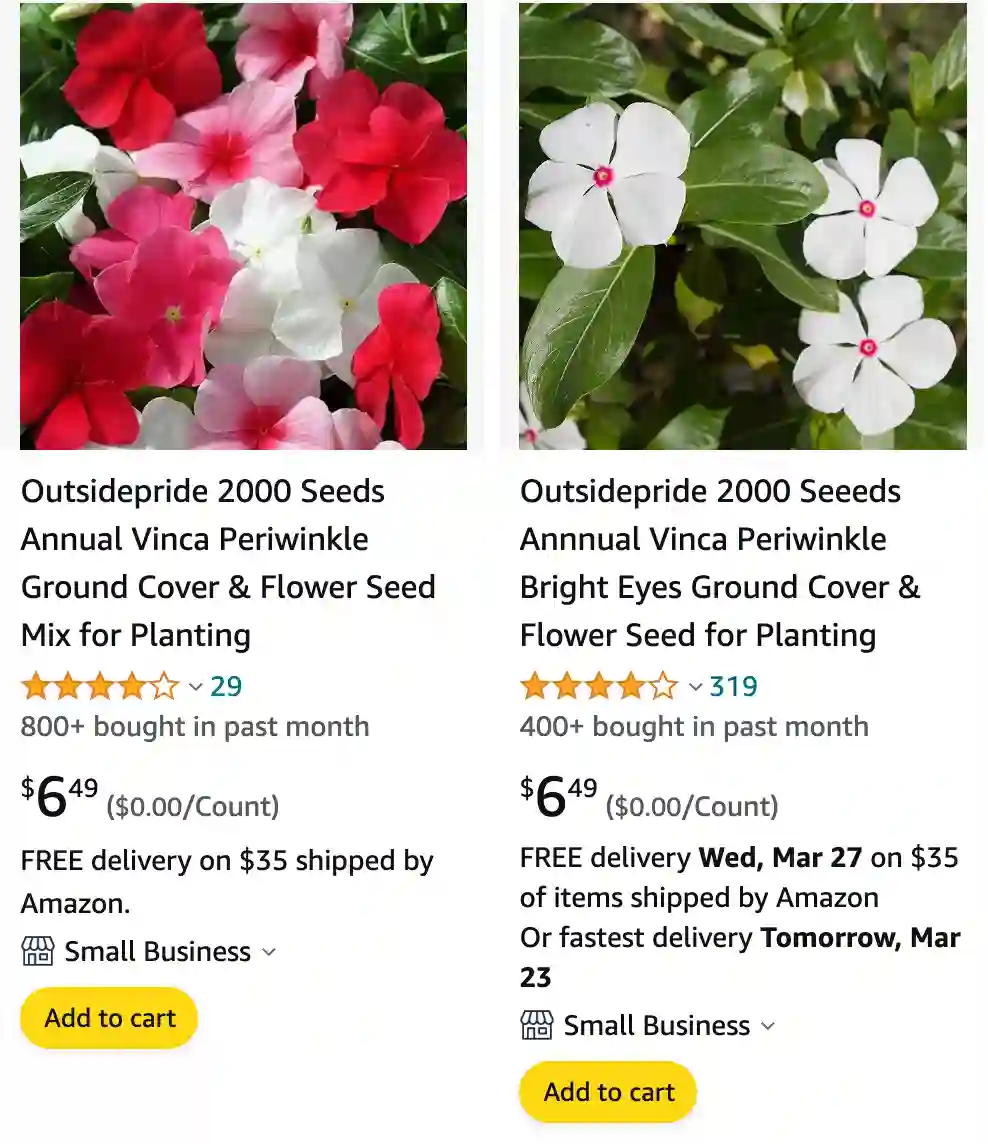Introduction
I recently embarked on a gardening adventure, and it didn’t take long for me to fall in love with the Vinca vine. Its charm lies in its simplicity, low-maintenance nature, and ability to add a touch of beauty to any corner of your garden. In this article, I want to share my personal experiences and opinions about this lovely plant, along with some valuable insights I’ve gathered along the way. So, join me on this journey as I delve into the world of Vinca vines.


Characteristics
Vinca vines are versatile, with different species and varieties to choose from. These plants are subshrubs or herbaceous, and I discovered that they have slender trailing stems that typically grow between 1 to 2 meters long. What’s fascinating is that these stems often take root wherever they touch the ground, allowing the Vinca to spread rapidly. The leaves of Vinca are opposite, simple, and come in various shapes and sizes, making them an interesting addition to any garden.
The most captivating feature of the Vinca vine is its salverform flowers. I’ve observed that these blooms, which resemble those of Phlox, are simple and elegant, with usually violet petals that occasionally appear in white. Their tube-like structure forms a beautiful contrast with the lush green foliage. The fruit of the Vinca plant consists of a pair of divergent follicles that release seeds when dry.
Vinca Vine Care
I was pleasantly surprised to find that Vinca vines are incredibly easy to care for. They thrive in a variety of conditions, whether it’s under the scorching sun or in the shade. Their low-maintenance nature makes them a perfect choice for garden enthusiasts of all levels of expertise.
Light: Vinca vines can adapt to different light conditions. They grow in full sun, partial shade, and even full shade. Although they can tolerate deep shade, I found that planting them in partial shade yields the best results.
Soil: Vinca vines prefer well-draining soil but are not too picky. They can thrive in rich, compost-enriched soil or tolerate poorer soils.
Water: One of the best features of Vinca vines is their drought tolerance. Once mature, they can thrive even in drier conditions. I’ve learned that it’s important to water them sparingly, as they do not appreciate overwatering. Watering the soil rather than the leaves helps prevent fungal diseases.
Temperature and Humidity: Vinca vines are sensitive to frost, so if you live in a colder climate, be sure to bring them indoors when night temperatures drop below 50 degrees Fahrenheit. They are also susceptible to diseases in humid, wet climates.
Fertilizer: Vinca vines don’t require much fertilization. However, a monthly application of a balanced fertilizer can help promote greener foliage and more blooms.
Pruning: Vinca vines are self-cleaning plants, and deadheading is not necessary. But if you desire a fuller look, you can pinch back the plant to encourage bushier growth.
Repotting: While they are often grown as ground cover, Vinca vines can also thrive in containers or window boxes. Ensure well-draining potting soil, adequate spacing, and regular liquid fertilizer for container-grown Vinca.
Propagation: Vinca can be grown from seeds, stem cuttings, or divisions. The quickest way to propagate them is through dividing established plants.
Common Problems
Vinca vines, like any other plant, can face their share of problems. Some common issues include pests like aphids, spider mites, scale, and whiteflies. Insecticidal soap or neem oil can help control infestations. Additionally, they are susceptible to fungal diseases, which can cause issues like wilt, dieback, and leaf spots. Proper watering practices and avoiding wet leaves can mitigate these problems.
Varieties
One of the appealing aspects of Vinca vines is the variety of species and cultivars available. Vinca minor and Vinca major are two of the most extensively cultivated species, each offering a range of leaf and flower colors, sizes, and habits. With Vinca vines, you can personalize your garden to your heart’s content.
Conclusion
In my gardening journey, Vinca vines have become an irreplaceable part of my landscape. Their ability to adapt to various conditions, their low-maintenance nature, and the elegant simplicity of their blooms make them a favorite choice for both novice and experienced gardeners. Whether you’re looking for ground cover, container plants, or a touch of natural beauty in your garden, Vinca vines have got you covered. My personal experience with Vinca has been nothing short of delightful, and I encourage you to give these charming plants a try in your own garden. You’ll be rewarded with a burst of color and a low-stress gardening experience.



